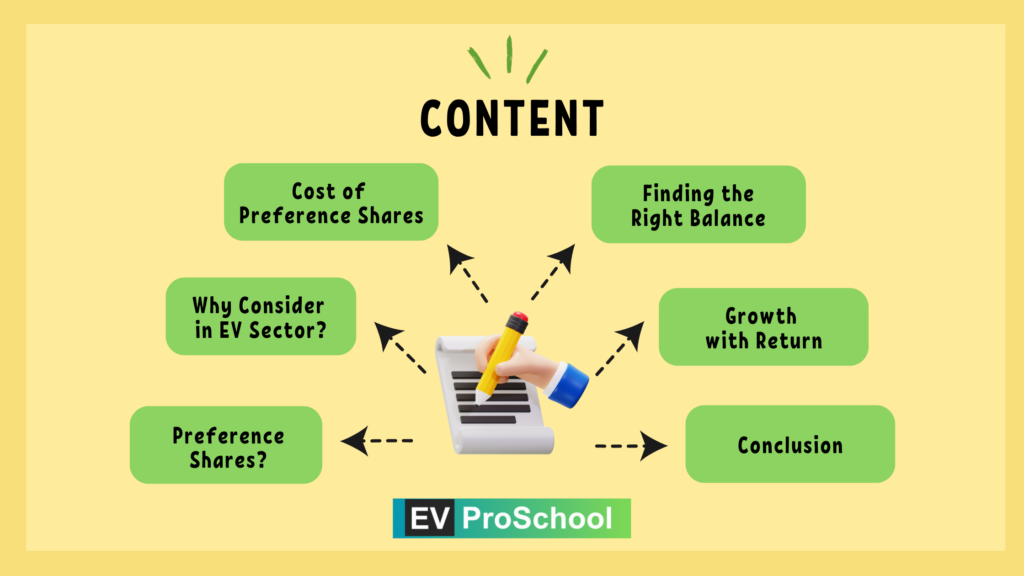Understanding the preference shares meaning & Cost of Preference Shares is crucial for companies and investors. In the dynamic landscape of the electric vehicle (EV) industry, companies continually seek diverse financing options to fuel growth and innovation.
Preference shares have emerged as a compelling option for EV companies, offering a unique balance between debt and equity financing. However,

What are Preference Shares?
Preference shares are a type of security that falls between common stock and debt. They offer investors some of the benefits of both:
Dividend priority:
Preference shareholders typically receive dividends before common shareholders. These dividends can be fixed or variable, depending on the terms of the issue.
Limited voting rights:
Preference shareholders typically have limited or no voting rights on company matters. This can be attractive to investors who want a steady stream of income without the responsibility of voting on company decisions.
Preference Shares in the EV Sector?
For EV companies, preference shares offer several advantages:
Raise capital without diluting ownership:
Unlike common stock issuance, which increases the number of outstanding shares and potentially dilutes existing shareholder ownership, preference shares don’t dilute ownership.
Attract investors seeking steady income:
Investors looking for a predictable return on their investment may be drawn to the fixed or variable dividend payments offered by preference shares.
Improve creditworthiness:
Issuing preference shares can strengthen a company’s financial profile, potentially improving its creditworthiness and access to future financing.
Know More About : IAS39 Insights from EV Industry : How to decode Interest Computation
The Cost of Preference Shares
The cost of preference shares for EV companies can be viewed through two lenses:
Dividend Rate:
The dividend rate offered on preference shares directly impacts the cost. A higher dividend rate will be more attractive to investors but also a higher cost for the company issuing the shares.
Redemption Features:
Some preference shares are callable, meaning the company can redeem them after a certain period at a predetermined price. This flexibility can be advantageous for the company, but it introduces uncertainty for investors. Additionally, some preference shares are cumulative, meaning any missed dividend payments accumulate and must be paid before common shareholders receive dividends.
Finding the Right Balance
Determining the optimal cost of preference shares requires careful consideration of several factors:
Market conditions:
The prevailing interest rates and overall market appetite for EV stocks will influence the dividend rate companies need to offer.
Company’s financial health:
A company with a strong financial position can typically command a lower dividend rate on preference shares.
Investor preferences:
Understanding the target investor base and their priorities regarding dividend yield and flexibility is crucial.
Conclusion
Preference shares can be a valuable tool for EV companies seeking to raise capital without diluting ownership. However, understanding the cost of preference shares, including dividend rates and redemption features, is essential for making informed decisions. By carefully considering market conditions, company financials, and investor preferences, EV companies can leverage preference shares to fuel their growth journeys in a sustainable and cost-effective manner.
DoFollow Links:
- Understanding Stock Options: provides a good foundation for understanding different types of securities.
- EV Startup Financing: offers insights into various financing options for EV companies.



